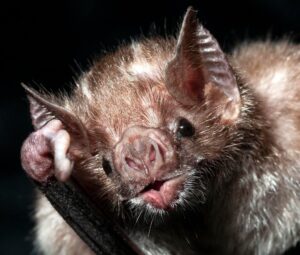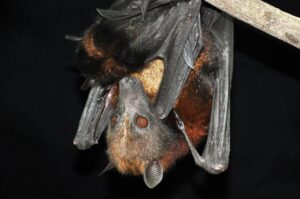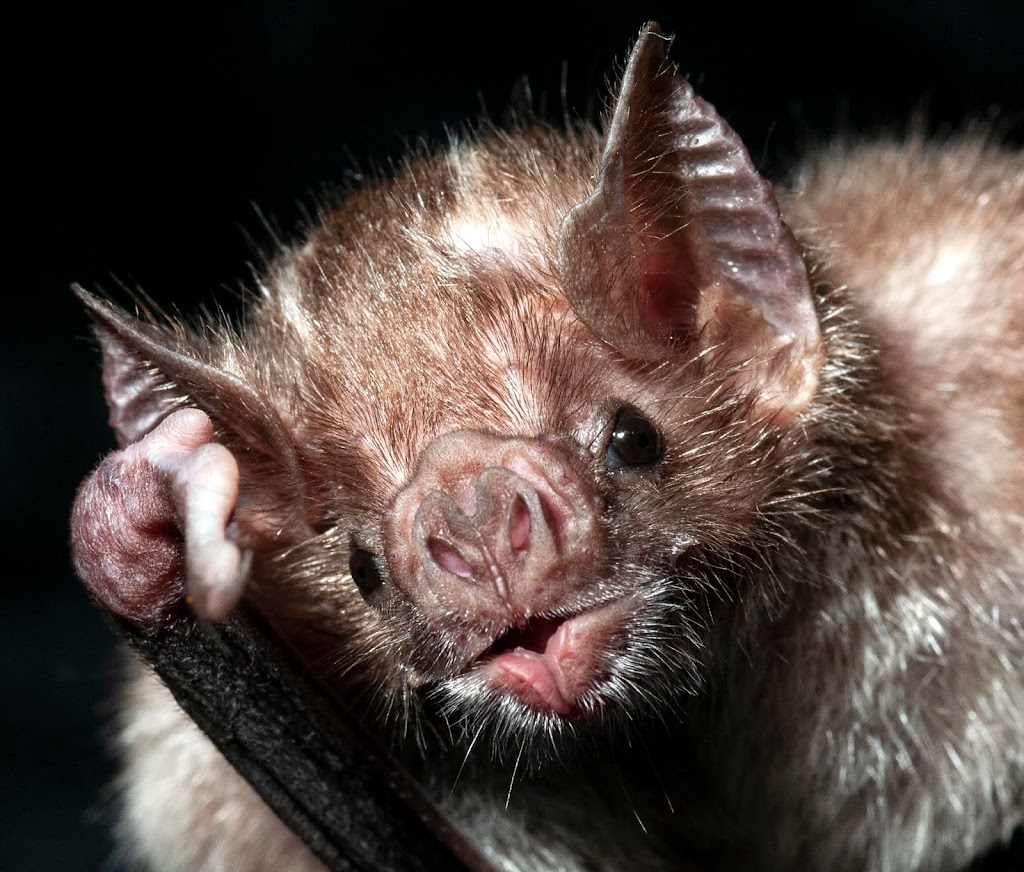Or 5 New Things About Bats We’ve Learned in the Past 5 Years
Contributed by Amy Wray
Back in 2014, I was super lucky to work with TED-Ed to create this animated video and interactive lesson on the truth about bats. But, since that was a while ago, lots of new science has been done and warrants an update on some of the most exciting recent findings in bat ecology and conservation research.
1) While in 2014 there were just over 1,200 documented species of bats, now there are more than 1,400 species on the official list! Bats that recently got the full taxonomic description workup include the newsworthy “Lance Bass” bat (Murina hkakaboraziensis) and the charming “Yoda” bat (Nyctimene wrightae). The genus Myotis, one of the most species-rich of all mammalian genera, also saw the addition of several newly described species such as the aptly named cryptic myotis (Myotis crypticus), which was the 1400th species added to the list. Meanwhile, other bat species — like the evening bat (Nycticeius humeralis) in Wisconsin and Kuhl’s pipistrelle (Pipistrellus kuhlii) in Europe — have been found in new areas, which could represent range expansions in response to climate change.
 |
| Close up of a common vampire bat (Desmodus rotundus Photo by Brock and Sherry Fenton. |
2) Vampire bats never cease to amaze and delight, and studying their social dynamics keeps yielding fascinating information about animal behavior. For example, researchers have found that common vampire bats (Desmodus rotundus), ever the cleanly characters, use grooming to make new friends and that friendships made in a lab setting are maintained in the wild. Also, these bats practice their own brand of “social distancing” and tend to avoid grooming non-kin when they are feeling sickly.
3) Bat researchers continue to learn more about what bats are eating, and have found that insectivorous bats consume pest insects for even more crops than previously documented, including rice, pecans, and macadamia nuts. By studying the diets of bats, we have also learned a lot in the past few years about the nuances of their foraging ecology. While many bat species provide free-of-charge pest control in agricultural areas around the globe, some of them are better at doing their diligent work in landscapes with more natural vegetation that provide enough food for them when those pesky crop pests aren’t around. In urban areas, acoustic monitoring has also shown that our insect-snacking friends can benefit greatly from habitats like green roofs and green spaces in cities.
 |
|
Island flying fox (Pteropus hypomelanus) mother and pup.
Photo by Juliana Senawi. |
4) Plants work hard, but fruit- and nectar-feeding bats work even harder. Scientists have found new evidence that bats like the island flying fox (Pteropus hypomelanus can increase the fruit production of durian. Similarly, Madagascan flying foxes (Pteropus rufus) disperse seeds while boosting their germination rates, and several species of fruit bats maintain connectivity between fragmented urban forest landscapes. Bat biologists and their industry partners have also further developed and implemented bat-friendly tequila initiatives that allow a small portion of agave to flower in order to support the small but mighty nectar-feeding bats that are important agave pollinators. These efforts contributed to a conservation success story where the lesser long-nosed bat (Leptonycteris yerbabuenae) became the first bat species to be removed from the United States endangered species list.
5) As the only flying mammal, bats have super unique physiology. Researchers studying the biomechanics of bat flight have gained a better understanding of how their skin, muscles, and bones in their wings work together, which of course, still keeps inspiring robot designs. Other scientists used airplanes to track Brazilian free-tailed bats (Tadarida brasiliensis) and found they can reached top speeds of 44.5 meters per second — that’s nearly 100 miles per hour — thus earning the crown for the fastest horizontal flyer in the entire world. Other important discoveries in bat physiology have implications for understanding the effects of white-nose syndrome on hibernating bats in North America, with studies showing that factors such as evaporative water loss, temperature, and body fat influence bat survival.
This brief overview of bat research updates is by no means comprehensive, and every day there are more and more awesome ways to learn in depth about the diversity of bats, the secrets hidden in bat genomes, and how bats have responded to the global changes caused by humans. Other resources for bat enthusiasts of all ages include Project EduBat and the Bat Squad. Since bats worldwide face many conservation challenges, continuing to learn about them and sharing this information with others is the least we can do for these heroes that we need, but that we probably don’t deserve.

